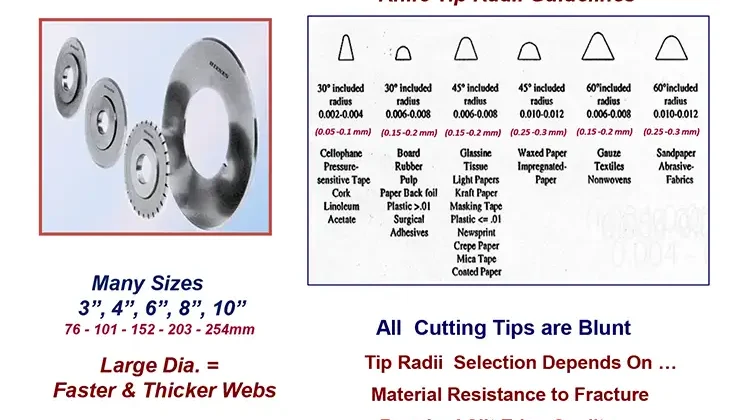
Razor Blades, Crush Knives and Shear Knives are the more commonly used slitting tools to cut roll-making webs.
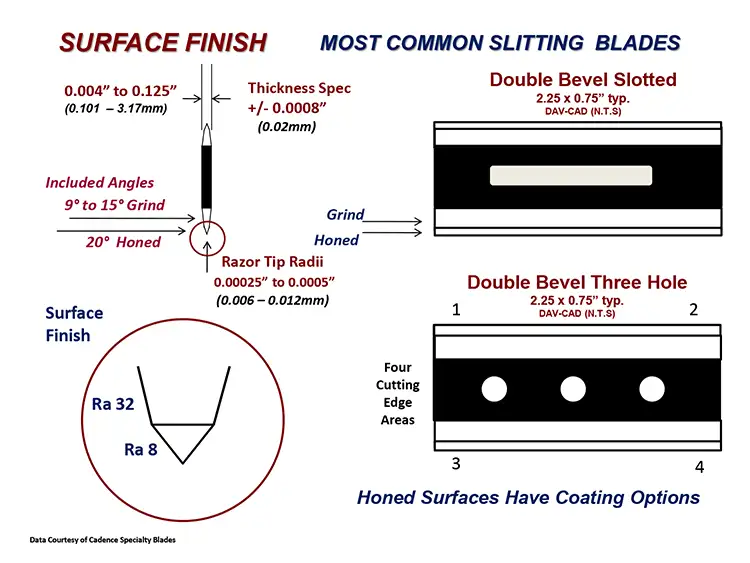
These three tools cut a wide range of web materials, including various paper web thicknesses; fluffy/delicate to stringy/tough nonwovens; ultra-thin polymer films to thick plastic sheet; coated, laminated and matted webs; printed webs; adhesive-covered webs and many more. Each offers a number of different blade and knife shapes to obtain the best cut-edge quality required to meet specifications.
The most common Razor Blade shapes are the slotted rectangle and the three-hole Double Bevel blades … both measuring 2.25 in. x 0.75 in. (see Figure 1).
Blade thickness and cutting-edge angles are key variables. The common converting thickness selection range is 0.004 in. to 0.125 in. based upon the web material characteristics – toughness, density, stiffness, etc. As blade thickness increases, a larger included blade angle provides more cutting power, but with a less sharp tip. Beware … the thinner the blade, the more susceptible it is to flexing and breaking from a cross-machine (CD) shifting web.
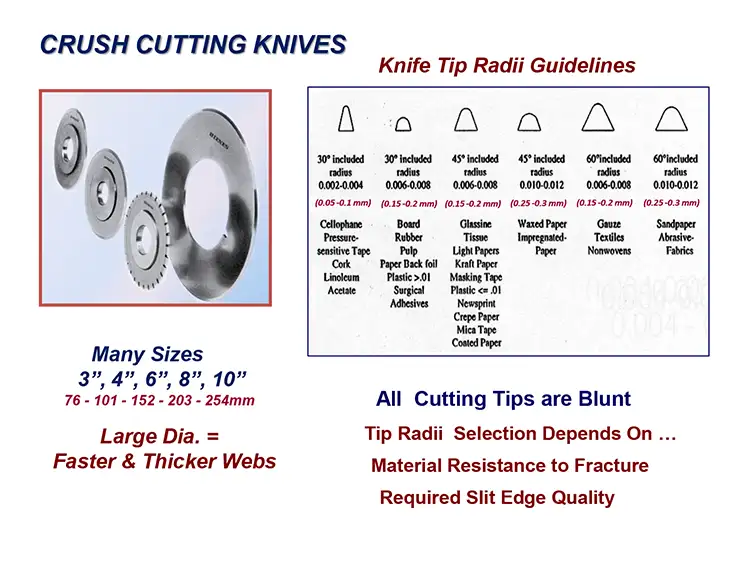
The more common Crush Cutting knife diameters are 3 in. (76 mm), 4 in. (101 mm), 6 in. (152 mm), 8 in. (203 mm) and 10 in. (254 mm). The larger the diameter, the faster web speed it can run and the thicker web material it can fracture. All Crush Knife cutting tips are blunt. Tip radius selection depends on the web material’s resistance to fracture. Above the tip, the knife is angled to provide loading support in operation. The more standard support angles are 30°, 45° and 60°.
Higher web-fracture loading force requires a thicker knife that creates a rougher web cut edge and higher slitting dust levels (see Figure 2).
There are two more common top/male slitting Shear Knife designs: Flat Machined and Stamped Dish. Both of these knives fracture the web in a scissor-like fashion, with one of the web edge cuts briefly remaining in contact with the top-knife face as it travels to the winder. This contact can damage the web edge to varying degrees.
The machined knife is made from roll-bar stock and the dished knives typically are stamped from powdered sheet metal. They then go through a finishing process to create the designed diameter and the important cutting-edge bevel angle(s).
The purpose of the knife bevel is to present a sharp, thin edge to the web material that minimizes the amount of web deformation and slitting dust created during web fracture. It also must withstand the top-to-bottom knife contact side-loading force.
Some designs have just the primary bevel. But most knives have both a primary angle bevel and secondary angle bevel. The primary angle is ground on the O.D. of the knife and is where the web first contacts the Cut Point. Then the secondary angle potentially reduces web-to-knife side-contact deformation immediately after fracture (see Figures 3 and 4).
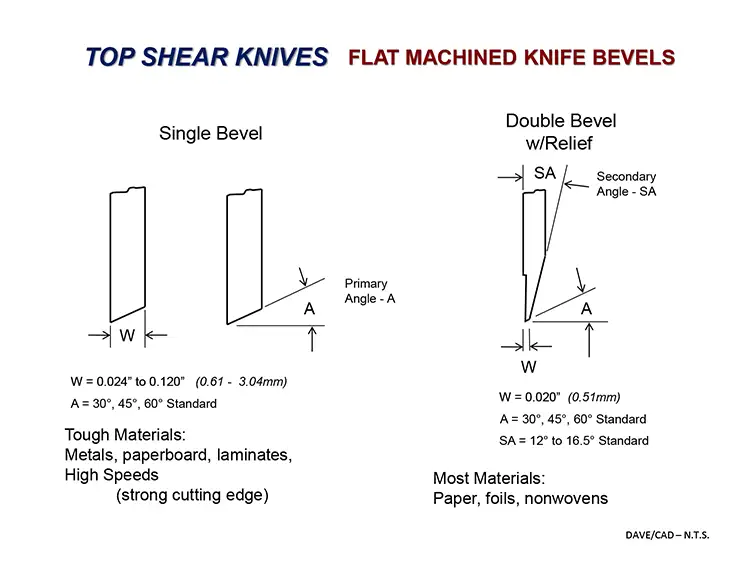
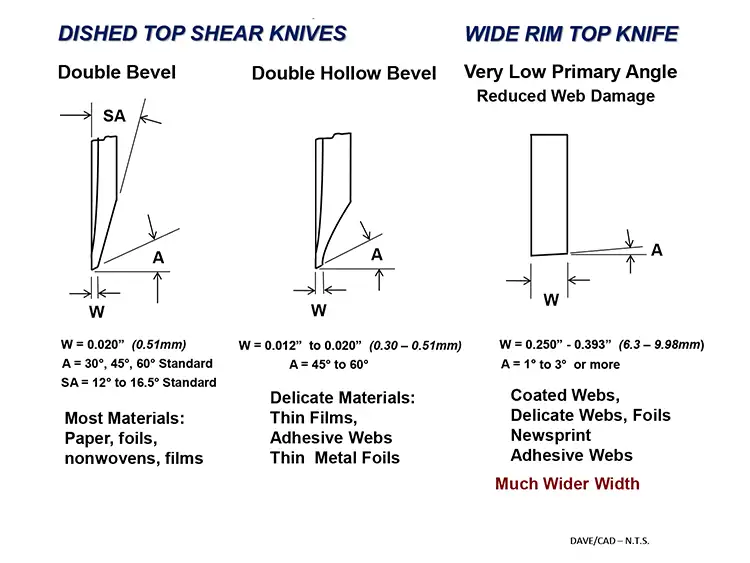
A third design less often used is the Wide Rim Knife that greatly reduces after-fracture web-friction damage to all webs. The slit edge is routed to the winder under the Cut Point after fracture, in contact with the wide knife circumference (See Figure 4).
Suggestion: Use the Roll-to-Roll Sourcebook to find a knife supplier as needed.

Dave Rumson
860-256-5658; drumson@maine.rr.com
ARC Member, ARC TV Presenter,
R2R Presenter, Converting School Educator

